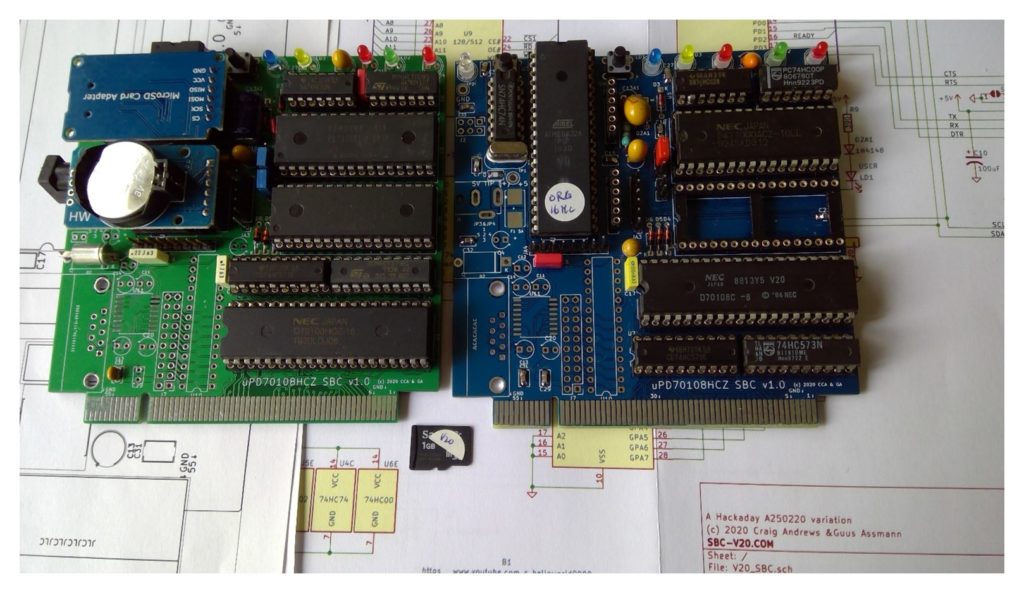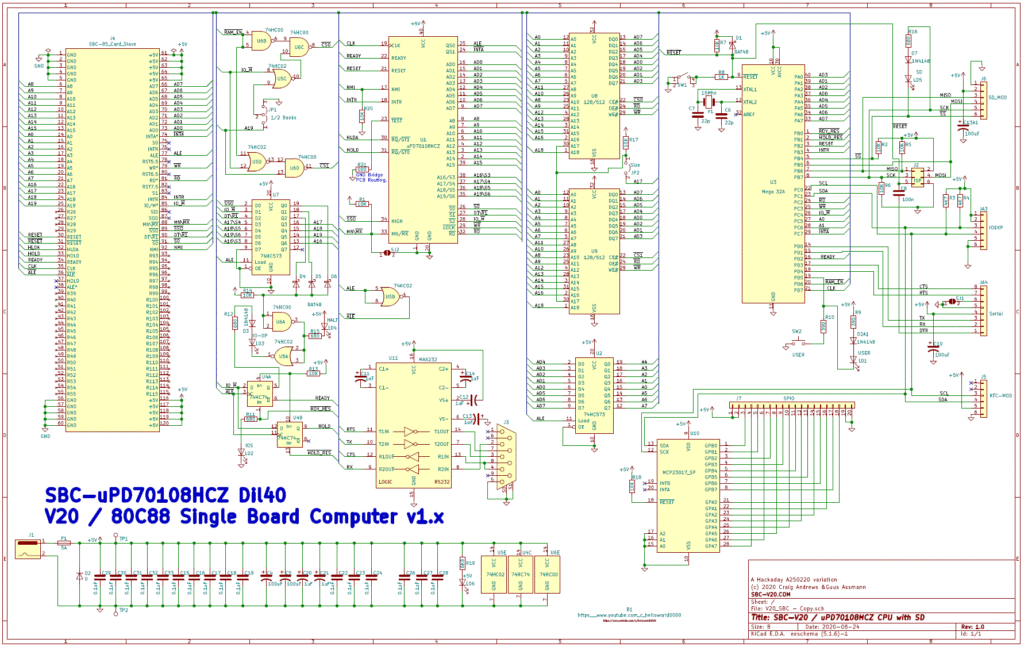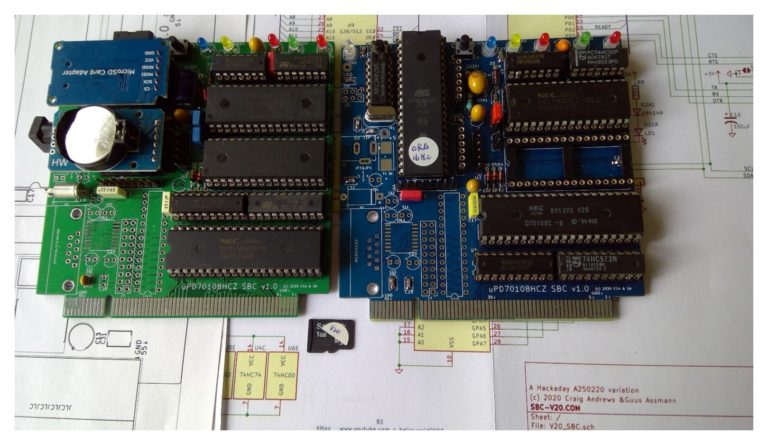For those SBC-85 advocates that have been longing for the power and prestige that comes with the Z80 or 8086, Guus Assmann has been one of The Netherlands’ busiest beavers this last year contributing to the SBC-85 ecosystem. Last year while Covid was in full swing, I swapped a few emails with Guus regarding the SBC-85 platform and gave him my blessing and encouragement to create a Z80 version. I then continued with my Covid long-haul recovery, survived the 2020 US presidential election and subsequent brouhaha, got vaccinated when my number finally came up, and finally moved back into my summer hobby. That pretty well sums up my last 18 months — and yet I am still unable to completely comprehend (and probably unprepared for) the discontinuity that will forever exist between 2019 and 2022.
Over the last year I received the occasional ping from Guus providing updates on his progress, but had not actually sat down to look over his accomplishments until now and, to say the least, I am incredibly impressed. This prolific engineer has created both V20 and Z80 single board computers based on the SBC-85 backplane as well as almost a dozen other boards, resident monitors, and support software. Fortunately for all of us, Guus has been gracious enough to share his design files for inclusion on the SBC-85.com site.
Guus’ SBC-V20 is built upon the just4fun @hackaday project V20-MBC: a V20 (8088 + 8080) CPU homebrew computer A170924 (link) as applied to the SBC-85 backplane. An Atmel Mega32A microcontroller is the system workhorse providing ROM and I/O which includes an I2C port that communicates with a Microchip MCP23017 port expander.

The SBC-V20 begins with the original SBC-85 backplane pinout and has further claimed a handful of previously unused pins (HLDA, HOLD, INTR, SSO*, DT/R1*, NMI, and S0*). Like the original SBC-85 CPU board, the SBC-V20 has a DB9 serial port with a MAX232 to generate true RS232 signal levels but it also brings off board the raw Mega32A signal levels for use with one of those handy TTL/CMOS to USB serial port adapters. Two of Guus’ completed boards are shown in the photograph, the one on the left has a micro SD and real time clock (via I2C) installed along with 1MB RAM, while the one on the right shows the board without the add-on modules and 128KB of RAM.

Primary components:
- uPD70108 CPU
- Atmel Mega 32A MCU
- 55100 (128KB) or 624006 (512KB) RAM
- MCP23017 port expander (I2C)
- MAX232 TTL / RS232 Level Shifter
I/O:
- SD Module with virtual disk capability
- Real Time clock Module
- 2x 8-bit I/O Expansion
- 115K RS232 Serial Port (with CMOS level header)
- ISP for programming the Mega32A
- 120 pin backplane (à la SBC-85)
Guus’s project package including the assembly manual, BOM, schematic, and KiCAD source files, and Gerber build files are available here (link). Software and more description is on Hackaday under the base design by just4fun @hackaday project A170924 (link) I will leave it up to Guus to let us know how compatible the SBC-V20 and SBC-Z80 boards are with the other SBC-85 expansion cards. For questions regarding Guus’ SBC-V20, leave a comment for Guus or send me an email on my contact page and I will forward it to him so you can communicate directly.

